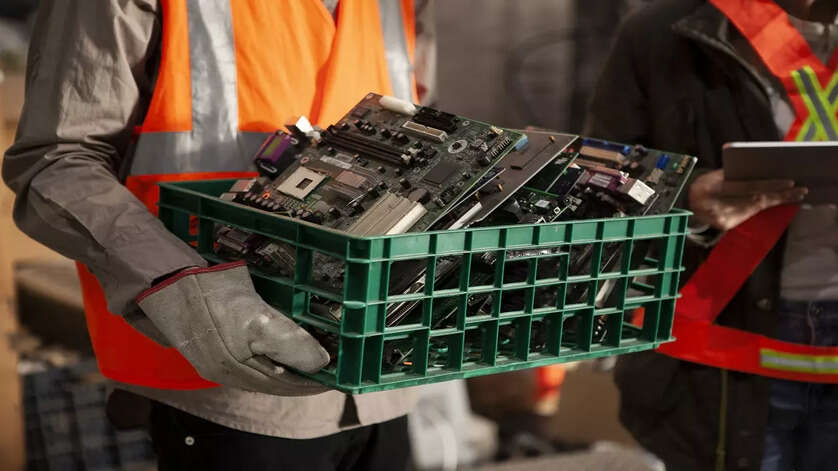- News
- Rethink, repair, recycle: How this smarter tech upgrade can lead to a greener future
Rethink, repair, recycle: How this smarter tech upgrade can lead to a greener future
In today’s digital age, technology evolves rapidly, making electronic devices an integral part of everyday life. However, this convenience comes at a cost– electronic waste (e-waste). The world generates over 50 million metric tons of e-waste annually, and India is the third-largest contributor¹. With improper disposal leading to environmental pollution and health hazards, responsible e-waste management is no longer optional—it’s urgent.
Consumers, businesses, and governments must work together to ensure sustainable consumption and disposal practices. From extending the lifespan of gadgets to advocating for stronger policies, every action counts in addressing this growing crisis.
Consumer responsibility: Extending the life of electronics
- Repair and refurbish: Many companies, including Apple and Dell, now offer certified repair programs to help extend product life³ ⁴. Instead of discarding a device over a minor issue, repairing it can save money and reduce waste.
- Buy refurbished or second-hand: Certified refurbished electronics undergo rigorous testing, making them a cost-effective and sustainable alternative to new purchases5 6.
- Adopt digital minimalism: Being mindful of electronic purchases and resisting unnecessary upgrades can significantly cut e-waste⁷.
- Trade-in and resale programs: Many brands now offer trade-in options where old devices are exchanged for discounts on new products, encouraging responsible recycling.
Old phones: A hidden gold mine
- A ton of old mobile phones contains more gold than a ton of mined gold ore⁸.
- Circuit boards, connectors, and microprocessors in phones contain valuable metals, which can be recovered through urban mining.
- Recycling 1 million mobile phones can recover around 34 kg of gold, 350 kg of silver, and 15 kg of palladium⁹.
- Instead of mining new resources (which is environmentally destructive), recycling old phones reduces e-waste and conserves finite raw materials.
Bridging the gap: Industry and government initiatives
- Right to repair laws: These policies, gaining traction globally, require manufacturers to provide spare parts and manuals so consumers can repair their devices instead of replacing them³.
- Extended Producer Responsibility (EPR): In India, the EPR framework mandates manufacturers to manage their product’s end-of-life disposal, ensuring proper recycling and reducing environmental impact⁹.
- E-Waste collection networks: Companies like Attero Recycling and Karo Sambhav are building formal collection and recycling systems, providing consumers with responsible disposal options¹⁰.
- Urban Mining & Circular Economy practices: Nations like Japan and Germany have pioneered urban mining, extracting valuable metals from discarded electronics instead of mining new resources¹¹ ¹³.
What you can do today: A practical guide to responsible e-waste disposal
- Extend product life: Repair, refurbish, or resell old devices instead of replacing them.
- Recycle responsibly: Use authorised e-waste collection centers or trade-in programs to ensure safe disposal.
- Support sustainable brands: Opt for companies prioritising eco-friendly production and recycling initiatives.
- Advocate: Spread awareness about responsible e-waste management and push for stronger policies.
- Declutter smartly: Instead of hoarding old gadgets, donate them or recycle through verified programs.
So, let’s take responsibility and work towards a life where technology enhances life without harming the planet.
References
²
³
⁴
⁵
⁶
⁷
⁸
⁹
¹⁰
¹¹
¹²
Disclaimer: This article has been produced for education and awareness purposes only, on behalf of Project E-Waste by Times Internet’s Spotlight team.
End of Article
FOLLOW US ON SOCIAL MEDIA
